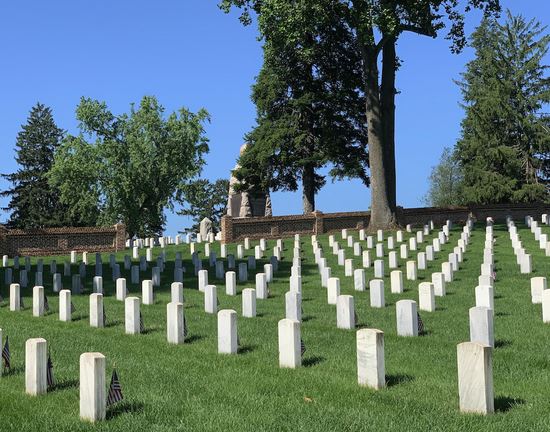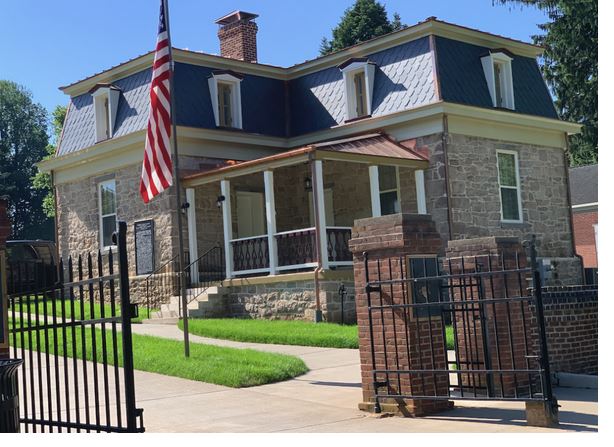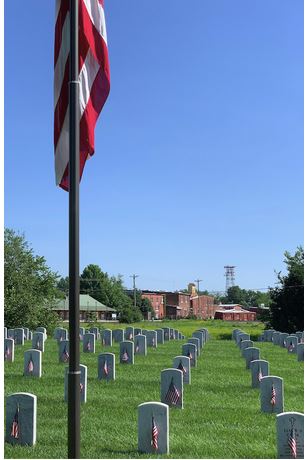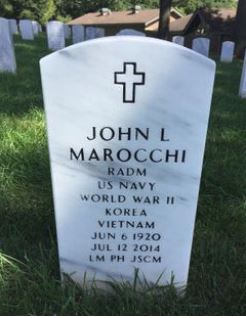A Place of Rest

(Culpeper National Cemetery, Memorial Day, 2022)
It was a brilliant clear morning, cool at dawn but likely to soar to ninety on this Memorial Day under bright blue sky. There is a National Cemetery right here in town. It is not far off the main drag, and well posted. I had never stopped despite it’s proximity to frequent passage. On this Day, I thought about a visit. It had been a matter of passing interest suddenly focused by age and events.
That focus led to some interesting things. You know our Culpeper County was halfway between the capitals of two warring nations. The armies of each spent successive winters here after a stiff battle at Cedar Mountain in 1862, and the largest cavalry battle in the New World’s history at Brandy Station the next summer.
After the guns fell silent in 1865, it was three years to the first “Decoration Day.” We know that as part of the name change in Memorial Day history, but there is more context to the decorations than we remember these days. There were 600,000 casualties in our Civil War and most had been buried where they fell, many without identification.
When peace returned, more than 40% of the Union Army’s dead were unidentified. In rough terms, that is something on the order of more than a hundred thousand young “unknowns” located in graves equally unmarked. An example of the grim harvest is at Vicksburg National Cemetery, where my family fought. Of the 17,000 Union graves there, 13,000 headstones read “unknown.” With the guns silent, families were distraught. All Washington could do was make an effort to at least consolidate the dead, if they could be found and whether or not their names were known.

Our County being one of the sites of fighting for more than two years, there were plenty of graves in our fields to be consolidated. In 1867, Culpeper National Cemetery was established to respectfully re-inter remains from the makeshift sites. Originally a six-acre plot, it was laid out with a caretaker’s solid-brick lodge constructed in 1872 in the Second Empire Victorian mode.
As an added historical note for Culpeper, the structure was designed by Union Quartermaster General Montgomery Meigs. He was also the architect of great public works still in use. He designed the Washington Aqueduct that still provides the drinking water for the Capital and is of historic value in its own right.
The original plot was considered sufficient to future needs, not anticipating the massive casualties of the World Wars to come. The last improvements to the original infrastructure were made by the Roosevelt Administration in the 1930s- straightening the headstones, replacing the maintenance shack and routine maintenance.

(The cemetery was abuzz this morning. Normally quiet, the heavens bathed it in a solemn beauty this morning. This is Section M, home of heroes).
That was basically all that happened to the National Cemetery in what was no longer a strategic junction, but a sleepy little town on the railroad tracks our family helped build before the war came. The tracks mark the boundary of the hallowed ground. The original available space was exceeded with the addition of the veterans of the Spanish and First Wars and the cemetery was closed to new interments on November 17, 1972.
There was a growing need in the system, though. The returning dead from Vietnam were an operational imperative and veterans of World War II were passing in the thousands each year. To solve the problem, the Army Quartermaster gave up jurisdiction and the cemetery was transferred to the smoothly efficient management of the Veteran’s Administration. Property was donated by the VFW and other interested parties for additional land and there is now plenty of room for ‘veterans of all past and future wars,’ though that has been a planning assumption before.

On this morning, in this place, it seemed appropriate to saddle up the car and drive over to pay respect. I managed to park and dismount at section “M,” where our old colleague and hero Rear Admiral John Marocchi lies beside his wife Mary. The salute I could give, straight as I could stand under a brilliant sky, was something that brought a tear. For them, who lie below but forever above.
– Vic
